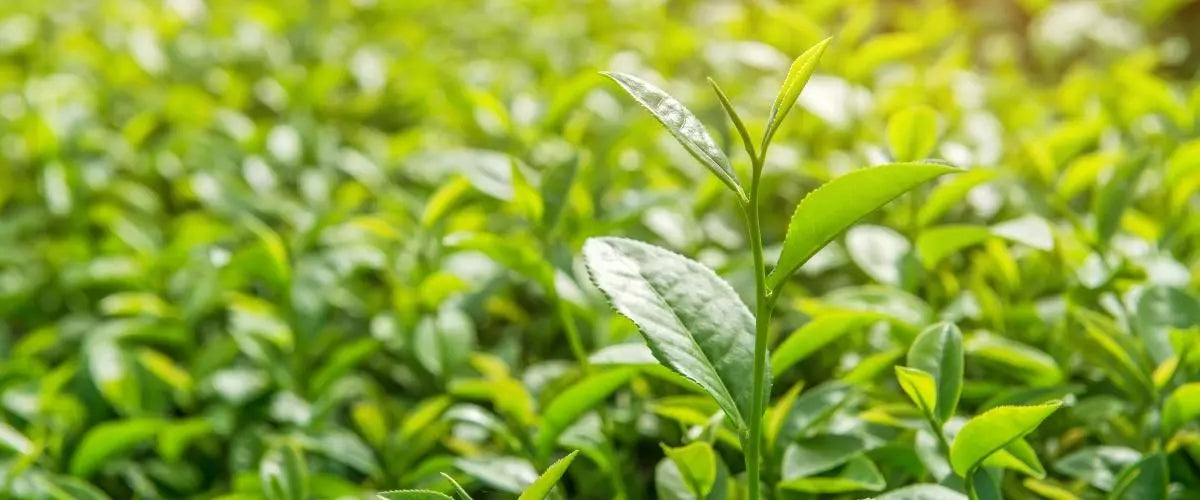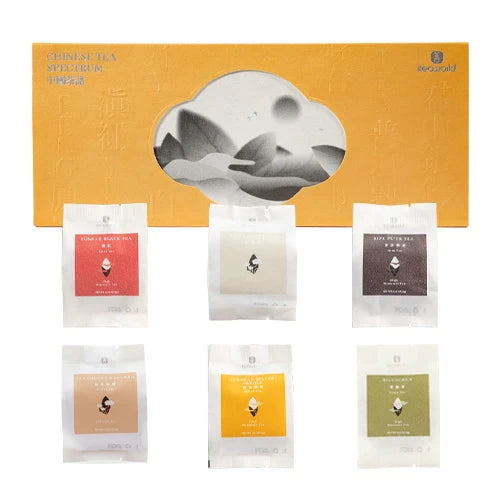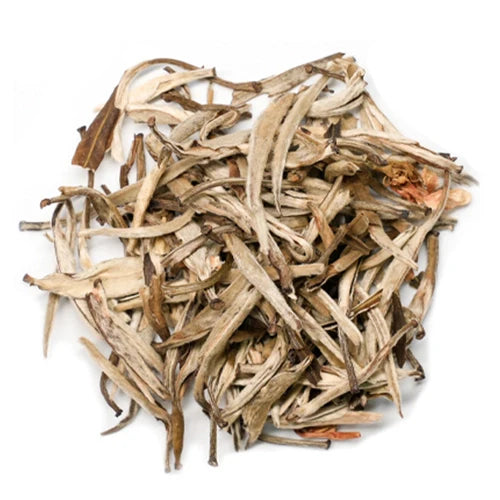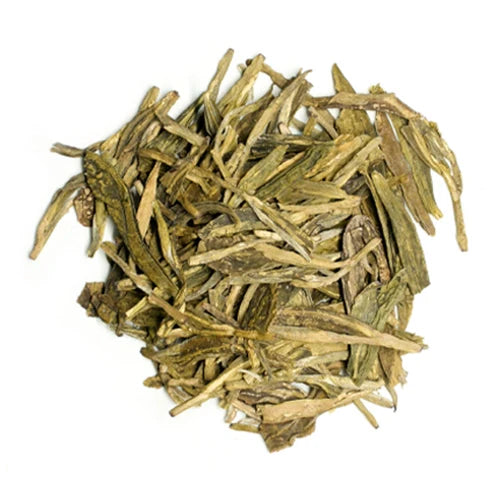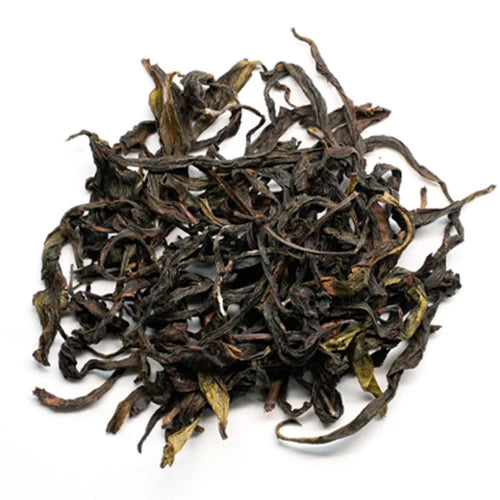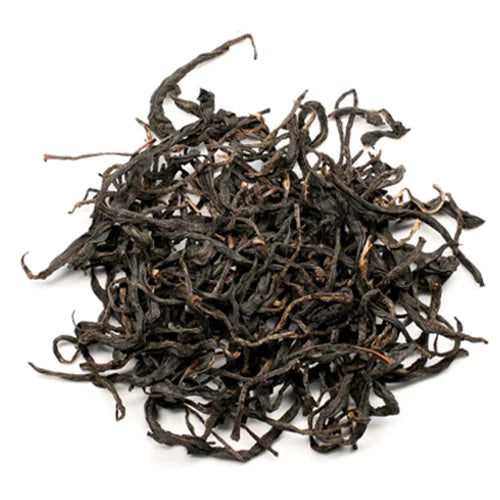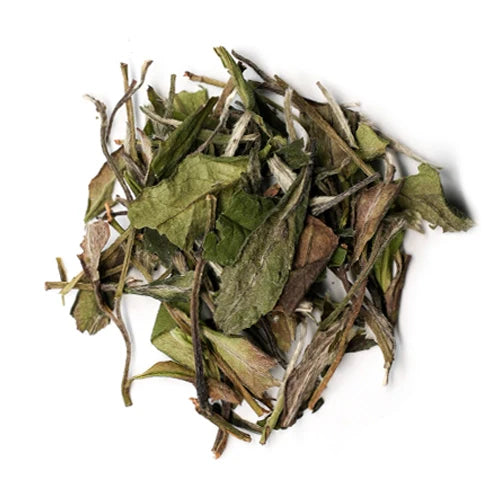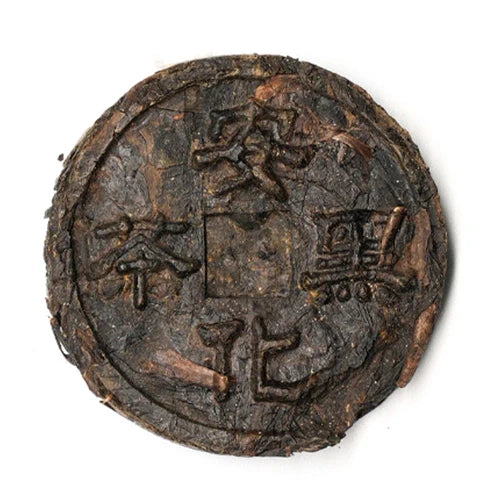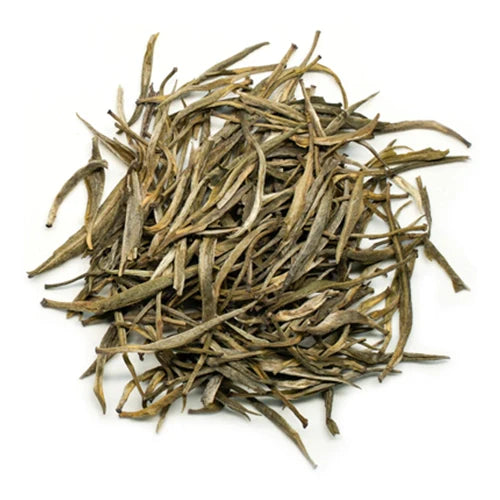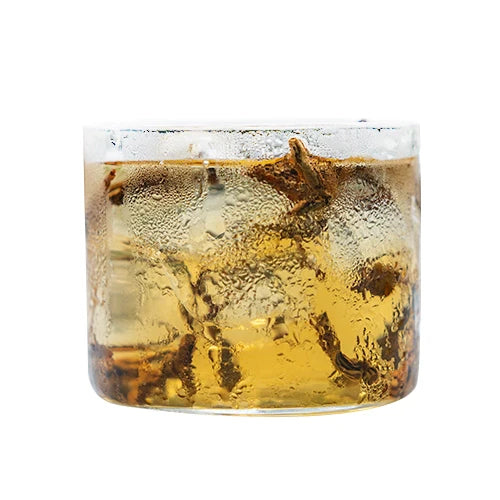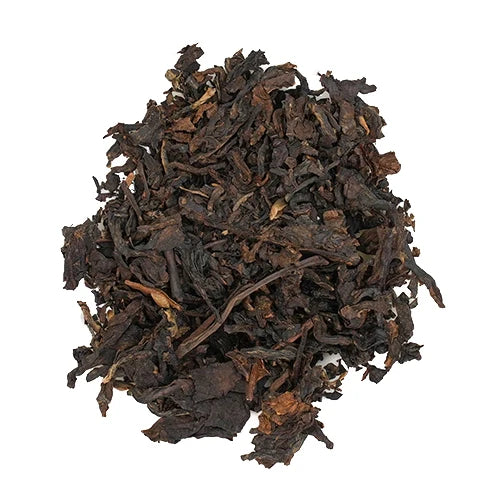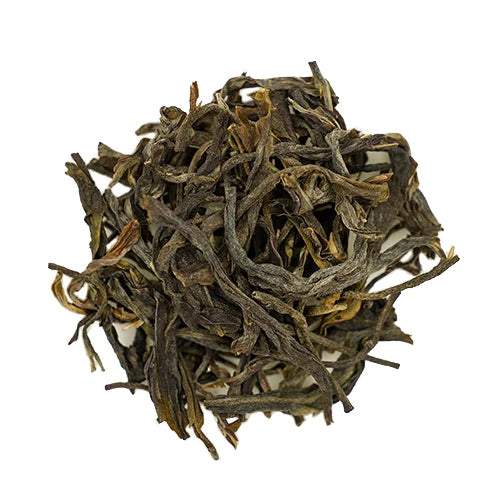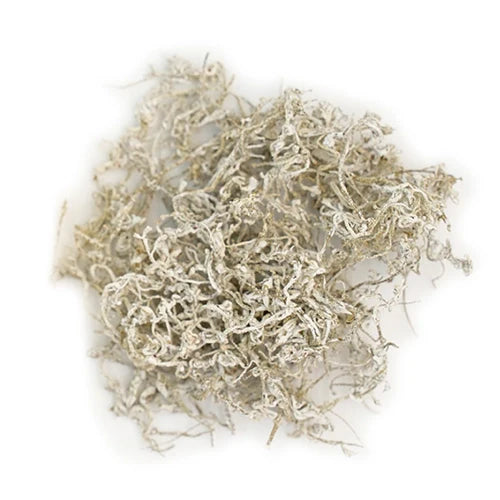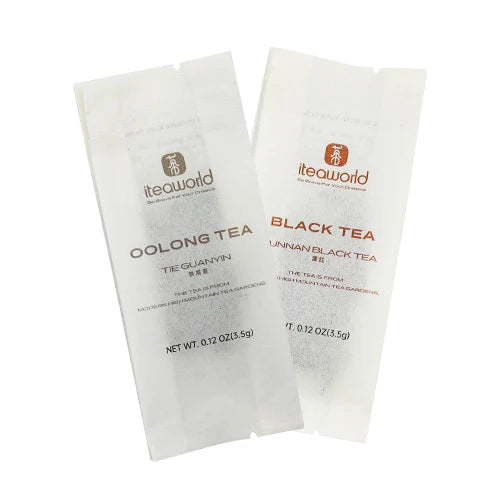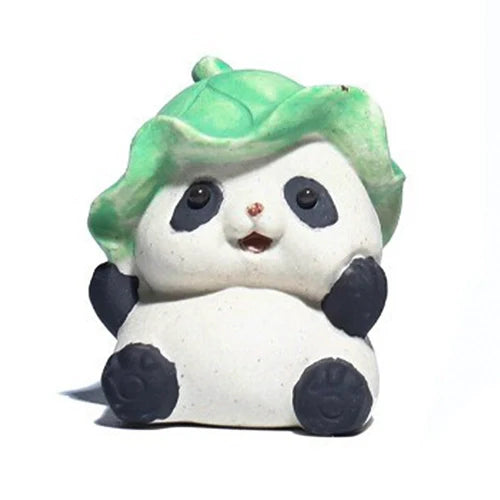Guide
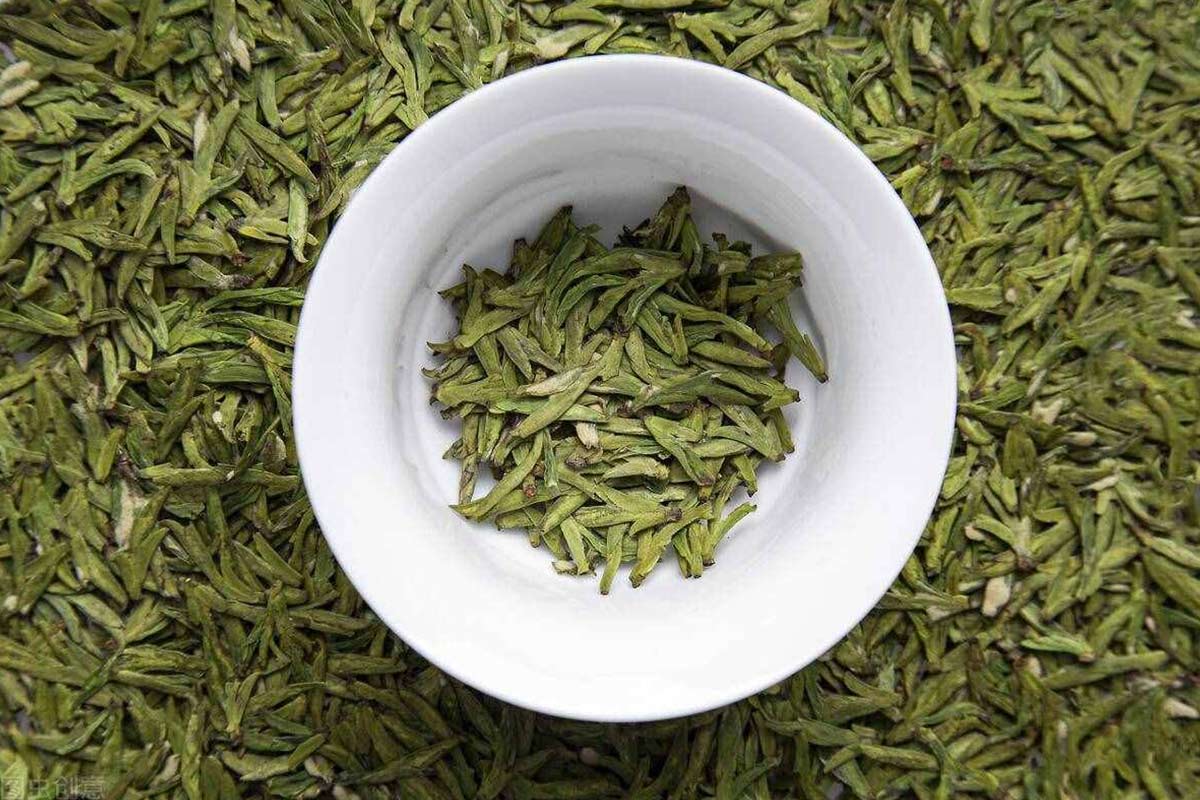
Tips For Buying Green Tea Loose Leaf Tea
Green tea, one of the six major types of tea in China, is the closest to fresh leaves because the production process of green tea is more simplified compared to other teas. The color of its finished product and the tea broth after brewing preserves more of the green tone of fresh tea leaves.Usually, green tea is the choice of many Chinese people. However, there are many people from other countries who may not have come across green tea. Green tea can be said to occupy the majority of the tea category, the top ten famous teas in China, green tea accounted for fifty to sixty percent of every selection.So, it is highly recommended that you try green tea!
Tips for selecting high quality green tea
How to go about buying green tea is also an important part of the process. Here are some tips for selecting green tea.You will get the best loose leaf tea by following these four steps
Step 1: Observe the Appearance
Check if the tea leaves are intact, note how broken they are, and see if their color is bright, lustrous, and glossy. Severely broken dry tea can affect the taste of the tea soup. A bright, oily, and glossy appearance indicates the quality and freshness of the tea, because what you want from loose leaf green tea is its fresh and tender aroma. Generally, loose leaf green tea picked before the Qingming Festival is of superior quality.
Step 2: Smell the Aroma
The aroma of tea leaves can be categorized into the dry tea scent and the aroma after brewing. When buying, mainly evaluate the purity, type, intensity, and persistence of the aroma emitted by the tea leaves after brewing. In everyday purchases, injecting a small amount of boiling water into the dry tea to stimulate its aroma, and then smelling it, can yield better results.
Step 3: Examine the Liquor and Taste It
Evaluate the color, brightness, and clarity of the tea soup after brewing. The tea soup should generally be clear and bright. For instance, the best colors for renowned loose leaf green teas are tender green, tender yellow, or just green. The tea "Enshi Yulu" has a tender green color. The clarity should be transparent and bright. Some delicate teas, like "Mao Jian," have more fuzz; after brewing, a layer of fuzz floats on the tea soup, commonly referred to as "Hao Hun" (fuzzy appearance), which is also one of the standards for good tea.
Step 4: Check the Leaf Bottom
The color and softness of the tea leaves can reflect the age and tenderness of the raw leaves. The brightness or dullness of the leaf bottom often corresponds with the clarity or murkiness of the tea soup. Soft leaf bottoms indicate that the raw material is more delicate. Tea made from older, coarser leaves will have a harder leaf bottom. To distinguish the softness, thickness, and age of the leaf bottom, in addition to direct observation, you can also use methods such as pressing with fingers or chewing.
Some of the above tips are the ones that can help you pick a good quality green tea loose leaf tea.If you are buying online you may not be able to physically touch the tea. More often than not you will need to find reliable brands and shop around.When you buy online, I recommend that you choose a brand that provides clear information. For example, the place of origin, the time of harvesting, the grade of the tea and so on. And it is more recommended that you start with a few samples or a collection first. This will allow you to experience a wide range of green teas at the lowest possible cost so that you can find your favorite varieties.Green teas are not as strong as black teas, nor do they have the versatility of oolong teas. Green tea is more about the flavor of the tea leaves themselves, and the main thing to drink is freshness. Therefore, when shopping for green tea, it is best to choose the year's production of tea leaves.
Recommended Green Tea Brands
iTeaworld recently launched a collection of selected Chinese green teas that are not commonly available in the market, containing six famous Chinese green teas, such as Longjing, Huangshan Maofeng, Biluochun, Enshi Yulu, Jasmine Green Tea (Seven Cellars), and Ancient Tree Green Tea (Puerh Raw Tea). With one box you can compare and taste the flavor differences of the mainstream famous Chinese green teas, further clarifying which green tea you prefer exactly.
Final Summary
When you are shopping for green tea, please remember to look at the appearance of the loose leaf tea, smell the aroma, taste the flavor and look at the bottom of the leaf. This way you will be able to judge the quality of the green tea and avoid price traps.If you are buying green tea online, remember to choose a trusted brand and start with a small sample.I hope the above information will help you to buy green tea!
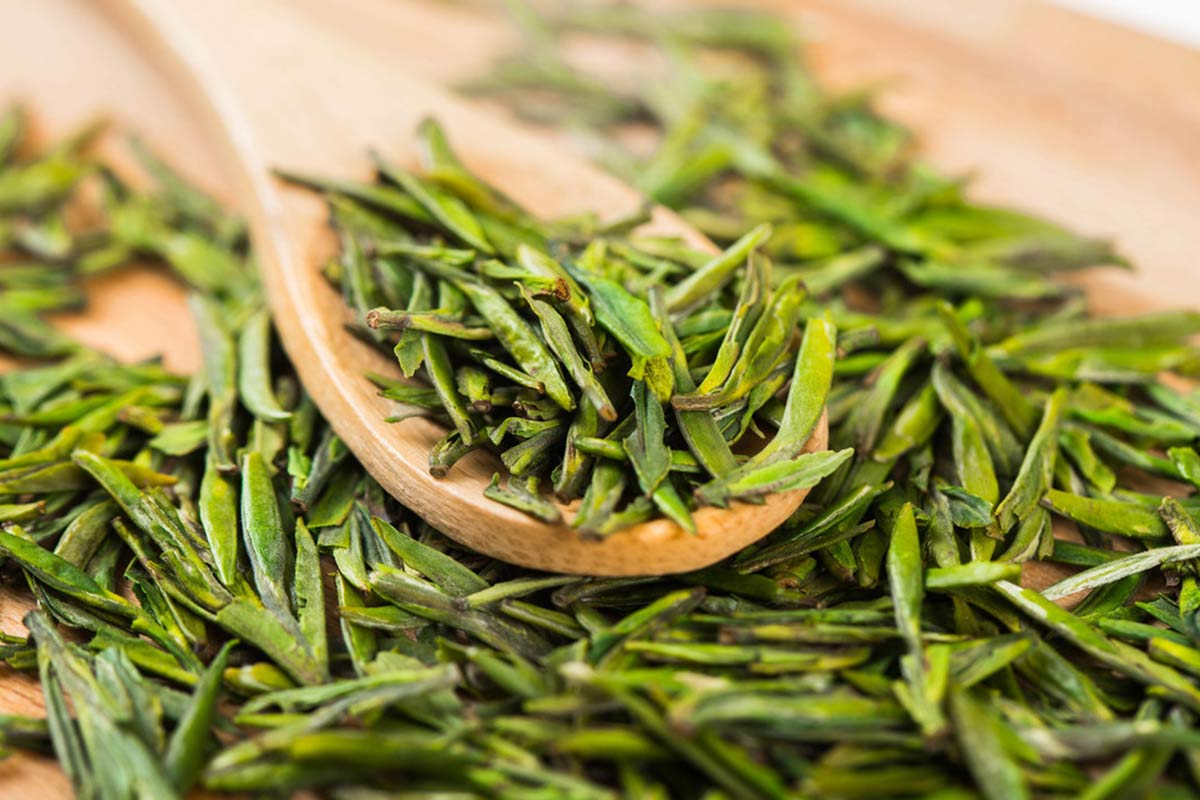
Types of Green Tea - All You Need To Know
Green tea, with its ancient history, boasts a wide array of varieties. According to statistics, there are hundreds of green tea varieties in China.
What is green tea?
Green tea refers to taking the new leaves or buds of the tea tree, unfermented, made by killing, shaping, drying, and other processes, retaining the natural substances of fresh leaves, containing the tea polyphenols, catechins, chlorophyll, caffeine, amino acids, vitamins, and other nutrients.So, what is the difference between green tea and oolong tea, black tea?There is a very big difference between these three kinds of tea, but the most significant difference lies in the different production processes.The following are the production processes of the three types of tea:Loose leaf Green tea: killing, kneading, drying. It is an unfermented tea.Loose leaf Black tea: withering, kneading, fermentation, drying. It is a fully fermented tea.Loose leaf Oolong tea:drying, drying, shaking, killing, twisting, drying. It is a semi-fermented tea.
How is green tea categorized?
(Bead Tea)
We typically categorize green tea based on harvesting time, quality standards, and tea-producing regions. However, according to the national standard GB/T14456, loose leaf green tea are divided into large-leaf green tea, medium-small leaf green tea, bead tea, eyebrow tea, and steamed green tea.
Large-leaf Green Tea: Made from the fresh leaves of large-leaf tea plants, this tea undergoes spreading, de-enzyming, rolling, drying, and shaping processes.
Medium-Small Leaf Green Tea: Made from the buds, leaves, and tender stems of small-leaf tea plants, this tea is produced through de-enzyming, rolling, and drying techniques.
Bead Tea: Produced from round de-enzymed green tea, this tea goes through procedures like sieving, winnowing, shaping, selecting, blending, and more to achieve its final form.
Eyebrow Tea: Using elongated de-enzymed green tea as the raw material, it undergoes processes like sieving, cutting and rolling, winnowing, selecting, refining, and blending to become the final product.
Steamed Green Tea: Made from the fresh leaves and tender stems of tea plants, this variety undergoes steam de-enzyming, rolling, drying, and shaping processes.
Experience the enchanting aroma and delicate flavors of iTeaworld's Loose Leaf Jasmine Tea: Unveiling the Essence of Tranquility. >>>
So, what do the terms "round de-enzyming", "elongated de-enzyming", and "steam de-enzyming" mean? This brings us to the processing of green tea. Depending on the de-enzyming and drying methods, green tea is divided into pan-fired green tea, roasted green tea, sun-dried green tea, and steamed green tea.
Green tea is classified based on the method of "de-enzyming" (also known as fixation), which can be divided into pan-frying and steaming. Within the same de-enzyming method, the division standard is based on the final drying method: if pan-frying is used for drying, it is called "pan-fired"; if it's dried in an oven, it's "oven-fired"; if sun-dried, it's "sun-dried".
Large-leaf green tea utilizes all four methods in its production, while medium-small leaf green tea typically only uses pan-frying and oven-drying methods for production.
1.Pan-fired Green Tea: This is the result of fresh leaves that have undergone the processes of de-enzyming, rolling, and then pan-drying.
Representative Teas: West Lake Dragon Well, Bi Luo Chun, Xin Yang Mao Jian, Ping Shui Zhu Tea, and Eyebrow Tea, etc.
Pan-fired green tea can further be categorized by its appearance into long pan-fired, round pan-fired, and flat pan-fired.
2.Oven-fired Green Tea: Fresh leaves that have undergone de-enzyming, rolling, and then oven-drying.
Representative Teas: Lu'an Melon Seed, Huangshan Maofeng, Jingting Green Snow, Yuexi Cuilan, etc.
Characterized by its intact appearance, deep green luster, distinct layered aroma, bright pale-green infusion, and a refreshing, mellow taste. Furthermore, oven-fired green tea is also used as a base for Jasmine tea.
3.Sun-dried Green Tea: Fresh leaves that have been de-enzymed, rolled, and then dried under the sun.
Representative Teas: Dian Qing (from Yunnan), Chuan Qing (from Sichuan), and Shan Qing (from Shaanxi), with Yunnan's large-leaf Dian Qing being of the best quality.
Noted for its stout and robust appearance, deep green sheen, high fragrance, bright yellow-green liquor, rich taste, and astringency. The commonly known Pu'er tea uses sun-dried raw tea from Yunnan's large-leaf variety, known as Dian Qing, which becomes raw Pu'er tea when pressed.
4.Steamed Green Tea: The earliest method of making Chinese green tea, distinct from the other three types. It employs hot steam to de-enzyme the fresh leaves, followed by rolling and drying.
Representative Teas: Enshi Yulu, Chinese Sencha (limited), Japanese Sencha, and Tencha, etc.
Recognized for its tight, straight form resembling pine needles, bright green color, fresh aroma, bright green infusion, fresh yet slightly astringent taste, and strong astringency. Steamed green tea boasts the three-green feature – green color, green infusion, and green leaves, presenting a captivating verdant allure.
Embrace the serenity of nature with iTeaworld loose leaf tea: Green Tea for a Balanced Life. >>>
Recommended green tea
There are many types of green tea, so how to choose the green tea that suits you?We recommend that you choose some green tea collection packages, which will allow you to test out your favorite green tea at the lowest costFor example, iTeaworld's green tea sampler can meet your needs. There are 6 well-known Chinese green teas, including the above-mentioned Biluochun, Longjing, Huangshan Maofeng, Jasmine Green Tea, Enshi Yulu, etc.You can taste green tea from different processes at one time, allowing you to find your favorite flavor.
Tea offers a plethora of flavors, from the bitter to the sweet. No matter the type, there will always be someone who appreciates its taste. After savoring green tea for so long, which variety have you been drinking? Feel free to share your thoughts in the comments.

In China, there are many kinds of tea. Each kind of tea has its own characteristics. Green tea is the tea that everyone drinks more. Green tea also occupies a high position in the top ten famous teas in China.
This Black Friday (Nov 3–Dec 1), iTeaworld is offering 50% off all green teas, including China’s most famous varieties like Longjing and Biluochun.
When you drink green tea, loose leaf tea is your best choice. This is the best way to get the full flavor of green tea into the water. Unlike loose leaf black tea which has a strong flavor, or loose leaf oolong tea which has a variety of flavors. Green tea with loose leaves is more of a "fresh" drink. Green tea is a refreshing tea.In China, there is a rich variety of green teas to choose from. If you're interested in exploring the world of green tea, tea samplers can be an excellent way to try different flavors and discover your preferences. Here are the top ten famous green teas in China and their core production areas, making them ideal candidates for tea samplers.Of course, we suggest that you start with the green tea selection because this way you will be able to experience multiple green teas at once to find your favorite variety. The green tea selection is available in many brands. For example, the green tea collection offered by iTeaworld loose leaf tea is a good choice.
1.West Lake Dragon Well (Longjing)
Core Production Area: Longjing Village, Hangzhou, Zhejiang.
Not all "Dragon Well tea" can be called "West Lake Dragon Well." The legally defined production areas for Dragon Well tea span 18 counties in Hangzhou, Shaoxing, Jinhua, and Taizhou. These are divided into three zones: West Lake, Qiantang, and Yuezhou. Only tea from the West Lake zone can be termed "West Lake Dragon Well"; other areas are simply called "Dragon Well tea" or "Yuezhou Dragon Well" or "Qiantang Dragon Well."
The West Lake area is further divided into first-level and second-level zones. The first-level zone includes the traditional five core areas: Shi (peak), Long (well), Yun (nest), Hu (run), and Mei (homestead). The famous "18 imperial tea bushes" gifted by Emperor Qianlong are located in the Hugong Temple on Shifeng Mountain. The second-level zone encompasses the Dragon Well produced outside of the first-level zone.
For the finest sourcing of Longjing Dragon Well tea, explore iTeaword's premium green tea selection. Our green tea selection captures the essence of China's celebrated green teas, from mellow daily drinkers to complex styles for connoisseurs. Treat yourself to the regional specialties and tea masters' creations.
2.Dongting Biluochun
Core Production Area: Dongting Mountain, Suzhou, Jiangsu.
The core production region for Biluochun is the Dongshan and Jinting towns in Wuzhong District, Suzhou. Tea trees are interplanted with peach, plum, apricot, persimmon, tangerine, ginkgo, and pomegranate trees, giving Biluochun its natural floral and fruity aroma. The unique feature of Dongting Biluochun is its early harvest; the more white fuzz it has, the better its quality.
3.Huangshan Maofeng
Core Production Area: Huangshan, Anhui.
Huangshan Maofeng is produced in the Huangshan region, Shexian, and Xiuning areas of Anhui province. The best is widely acknowledged to come from areas like Fuxi Township.
For those who appreciate rich and robust teas, we also recommend trying Da Hong Pao, a famous and highly regarded oolong tea.
4.Taiping Houkui
Core Production Area: Huangshan District, Anhui.
Taiping Houkui is the most uniquely shaped green tea, with the longest leaves. The best tea comes from the Monkey Pit in Xinming Township of Huangshan District (formerly Taiping County), which gave the tea its name. Taiping Houkui is particularly durable when brewed, with a distinct orchid aroma. Once brewed, each leaf bud stands upright.
If you enjoy the fragrant aroma of floral teas, our selection includes premium Loose Leaf Jasmine Tea.
5.Lu'an Melon Slice (Guapian)
Core Production Area: Lu'an City, Anhui.
The uniqueness of Lu'an Guapian lies in its production: no buds, no stems, made purely from tea leaves. It gets its name because it resembles melon seeds. It is primarily produced in the Dabie Mountain region of Lu'an City. High-quality Lu'an Guapian has a layer of white frost on its surface, which is a result of organic substances in the tea leaves precipitating out during the frying process. The more frost, the higher the quality.
6.Bamboo Leaf Green Tea (Zhu Ye Qing)
Core Production Area: Mount Emei, Sichuan.
Bamboo Leaf Green, also known as "Green Leaf Nectar", is renowned because of its connection to Mount Emei, a famous mountain.
Its origin is from tea gardens located between 600 and 1500 meters above sea level, such as in areas like Bai Long Dong, Hei Shui Temple, and Wan Nian Temple. Surrounded by mountains and enveloped in mist throughout the year, the tea trees here receive limited sunlight of low intensity. Consequently, the tea leaves are rich in chlorophyll and amino acids.
This premium loose leaf green tea is carefully hand-plucked and processed to yield a delicate liquor with captivating bamboo fragrance.
7.Anji White Tea
Core Production Area: Anji, Huzhou, Zhejiang.
Anji White Tea's primary production area is located in Anji County, Huzhou City, Zhejiang Province. It has become popular in recent years, and many tea novices are misled by its name, mistakenly buying it as a white tea.
What stands out about Anji White Tea is its refreshing taste, rooted in its rich content of 18 amino acids essential to the human body. With an amino acid content ranging from 5 to 10.6%, it is 3-4 times higher than regular green tea. It has fewer polyphenols than other green teas, making its taste particularly fresh without bitterness.
If you are oolong tea enthusiasts, do not miss out our TieGuanyin, a high-quality oolong tea with a unique and captivating aroma.
8.Xinyang Maojian
Core Production Area: Xinyang City, Henan.
The main production areas for Xinyang Maojian are spread across Shihe District (formerly Xinyang City), Pingqiao District (formerly Xinyang County), and Luoshan County.
The core regions for high-quality Maojian include places in Shihe District such as Che Yun Mountain, Ji Yun Mountain, Yun Wu Mountain, Tian Yun Mountain, Lian Yun Mountain, Hei Long Tan, Bai Long Tan, and He Jia Village, colloquially known as "Five Clouds, Two Ponds, One Village."
9.Enshi Yulu (Jade Dew)
Core Production Area: Enshi, Hubei.
Enshi Yulu, also known as "Jade Green," belongs to the steamed needle-shaped green tea category. Steamed green tea is one of the earliest types of tea invented in ancient China. The core production area of Enshi Yulu is in the southern part of Enshi State, including Bajiao Village and the eastern suburbs' Wufeng Mountain. It's typically harvested before the Qingming Festival and finishes before the Grain Rain. The raw material sought is a fresh leaf with a strong green color, either one bud with one leaf or one bud with two leaves.
Hubei's Enshi is known to have the world's largest selenium reserves, hence Enshi Yulu is rich in selenium, earning it the title "Selenium-rich Tea."
Japanese Yulu tea was first introduced from China.
Explore our classic tea selection, featuring a variety of green and black teas, including our carefully curated Classic tea selection.
10.Lushan Cloud and Mist Tea
Core Production Area: Lushan Scenic Area, Jiujiang, Jiangxi.
Lushan Cloud and Mist Tea dates back to the Eastern Han Dynasty and was listed as a tribute tea during the Song Dynasty.
Its primary production area lies above 800 meters in altitude, in places like Han Yang Peak, Xiao Tian Pond, and Xian Ren Cave. Due to the high elevation, vapor rises to form clouds and mist. It is foggy for up to 195 days a year, causing a delayed temperature rise. As a result, tea trees typically sprout after the Grain Rain, making the best harvest time from late April to early May.
These are the top 10 core green tea producing regions in China. All of the best loose leaf tea have their own specialties. If you can drink them all you will unlock a lot of information about green tea and thus become a green tea tasting master.If you want to buy expensive green teas, remember to check their origin information.I hope you enjoy these wonderful and delicious top 10 green teas from China!
If you’ve been curious to try these green teas, now’s the perfect opportunity — enjoy half off all green teas at iTeaworld’s Black Friday Celebration now!
Frequently Asked Questions About Chinese Green Tea
1.What Is the History of Chinese Green Tea?
The history of Chinese green tea dates back thousands of years. It was first mentioned in medicinal texts from the 1st century AD, though some historians believe tea drinking began as early as the 10th century BC. During the Song Dynasty starting in the 10th century, tea cultivation and culture developed. Tea ceremonies emerged as an intricate part of Chinese culture. Major advancements occurred in the Ming Dynasty with the introduction of loose leaf tea and novel processing techniques. The most significant development was in the 17th century with the practice of steaming or pan-frying leaves to produce what we recognize as green tea today. Chinese green tea cultivation and traditions have continued evolving over millennia.
2.Is Chinese Green Tea Considered Acidic or Alkaline?
Chinese green tea has typically been considered mildly acidic rather than alkaline. The pH level of most Chinese green tea varieties ranges from 5-6.5, placing it on the acidic side of the pH scale, though closer to neutral. This slight acidity is due to the presence of acids like gallic acid that naturally occur in tea leaves. Is green tea acidic? Higher grade greens like Longjing and Dragonwell may have a pH as high as 6, closer to neutral. Acid in green tea comes from natural acids in the leaves. The acidity level in Chinese green tea is generally lower than in other beverages like coffee or black tea. Some research has found acid in green tea may aid digestive health. Overall, Chinese green tea offers a mildly acidic beverage compared to other more strongly acidic drinks. Is green tea alkaline or acid? Chinese green tea is mildly acidic rather than alkaline.
3.How Is Chinese Green Tea Processed?
After harvest, Chinese green tea processing aims to prevent oxidation through various methods:●Steaming: Freshest leaves are steamed at high heat to halt enzymes promoting oxidation. This retains vibrant green color and fresh flavors.●Pan-frying: Leaves are fried in heated pans or woks. Heat kills oxidation enzymes more gently than steaming. Used for quality greens like Dragonwell and Longjing.●Baking: Some low-grade teas are baked at lower temperatures until dry to simplify mass production.●Shake-firing: Twigs are dried outdoors, shaken frequently in woks over wood fires to dry evenly while preventing fermentation. Used for lower-end and scented varieties.●Air drying: Leaves are laid out to dry indoors away from direct sunlight, which can tan leaves. This preserves nutrients but is slower than other methods.Proper ventilation and specific durations are key to halting oxidation at the right point. Finally, dried leaves may undergo sorting by size and quality. Overall, Chinese greens are minimally processed compared to oolongs and blacks.
4.What Are the Health Benefits of Chinese Green Tea?
Chinese green tea has many potential health benefits due to its high concentration of polyphenols and catechins. Chief among them is epigallocatechin gallate (EGCG), a powerful antioxidant that can reduce the risk of heart disease and cancer. Green tea may help lower "bad" cholesterol, blood pressure, and blood sugar levels. It also contains fluoride, which strengthens tooth enamel and prevents cavities. Compounds in green tea can boost brain function and may protect against neurodegenerative diseases like Alzheimer's. Studies also suggest green tea supports weight loss by speeding up metabolism and helping burn more calories. Drinking several cups per day can help maintain overall health and wellness.
5.What Are the Best Storage Practices for Chinese Green Tea?
Proper storage is crucial to maintaining the freshness, flavor, and aroma of Chinese green tea. Here are some best storage practices for Chinese green tea:1.Air-Tight Container:Store Chinese green tea in an air-tight container to prevent exposure to air, which can lead to oxidation and loss of flavor. Use containers made of materials like ceramic, glass, or stainless steel.2.Avoid Light Exposure:Keep green tea away from direct sunlight and artificial light, as light can degrade the quality of the tea leaves. Choose opaque containers or store the tea in a dark cabinet.3.Cool and Dry Environment:Store green tea in a cool and dry place to prevent moisture absorption. Avoid storing it near sources of heat, such as stoves or ovens, as exposure to heat can affect the tea's freshness.4.Avoid Strong Odors:Green tea can easily absorb surrounding odors. Store it away from strong-smelling substances like spices, coffee, or other aromatic items to preserve its natural flavor.5.Refrigeration for Long-Term Storage:For long-term storage, consider refrigerating Chinese green tea. Use an airtight container or vacuum-sealed bag to protect the tea from moisture and odors. Before using refrigerated tea, allow it to return to room temperature to avoid condensation.6.Keep Away from Moisture:Moisture can lead to mold growth and affect the quality of the tea. Ensure that the storage environment is dry, and consider adding moisture-absorbing packets to the container to prevent excess humidity.By following these storage practices, you can prolong the shelf life of your Chinese green tea and enjoy a consistently fresh and flavorful cup every time you brew.
6.Which Foods Pair Chinese Green Tea Perfectly?
Chinese green tea pairs well with a variety of foods, enhancing the overall dining experience with its unique flavors and aromas. Here are some foods that pair perfectly with Chinese green tea:
1.Dim Sum:The delicate flavors of Chinese green tea complement the bite-sized portions of dim sum, creating a harmonious balance. Try pairing green tea with steamed dumplings, spring rolls, and other dim sum varieties.2.Sushi and Sashimi:Chinese green tea, especially a light and slightly vegetal variety, pairs well with the clean and fresh flavors of sushi and sashimi. The tea's palate-cleansing properties enhance the dining experience.3.Seafood:Whether it's grilled fish, shrimp, or other seafood dishes, Chinese green tea's subtle sweetness and vegetal notes complement the natural flavors of seafood without overpowering them.4.Lightly Seasoned Poultry:Green tea pairs well with lightly seasoned chicken or turkey dishes. The tea's freshness complements the subtle flavors of the poultry without overshadowing them.5.Vegetable Stir-Fry:The earthy and slightly sweet notes of Chinese green tea work well with a variety of vegetable stir-fries. The tea can balance the richness of the dish and cleanse the palate between bites.When pairing Chinese green tea with food, it's essential to consider the tea's specific flavor profile and the intensity of the dish. Experiment with different green tea varieties to discover your preferred combinations and enhance your culinary adventures.
Connected with other tea lovers, join in Discord
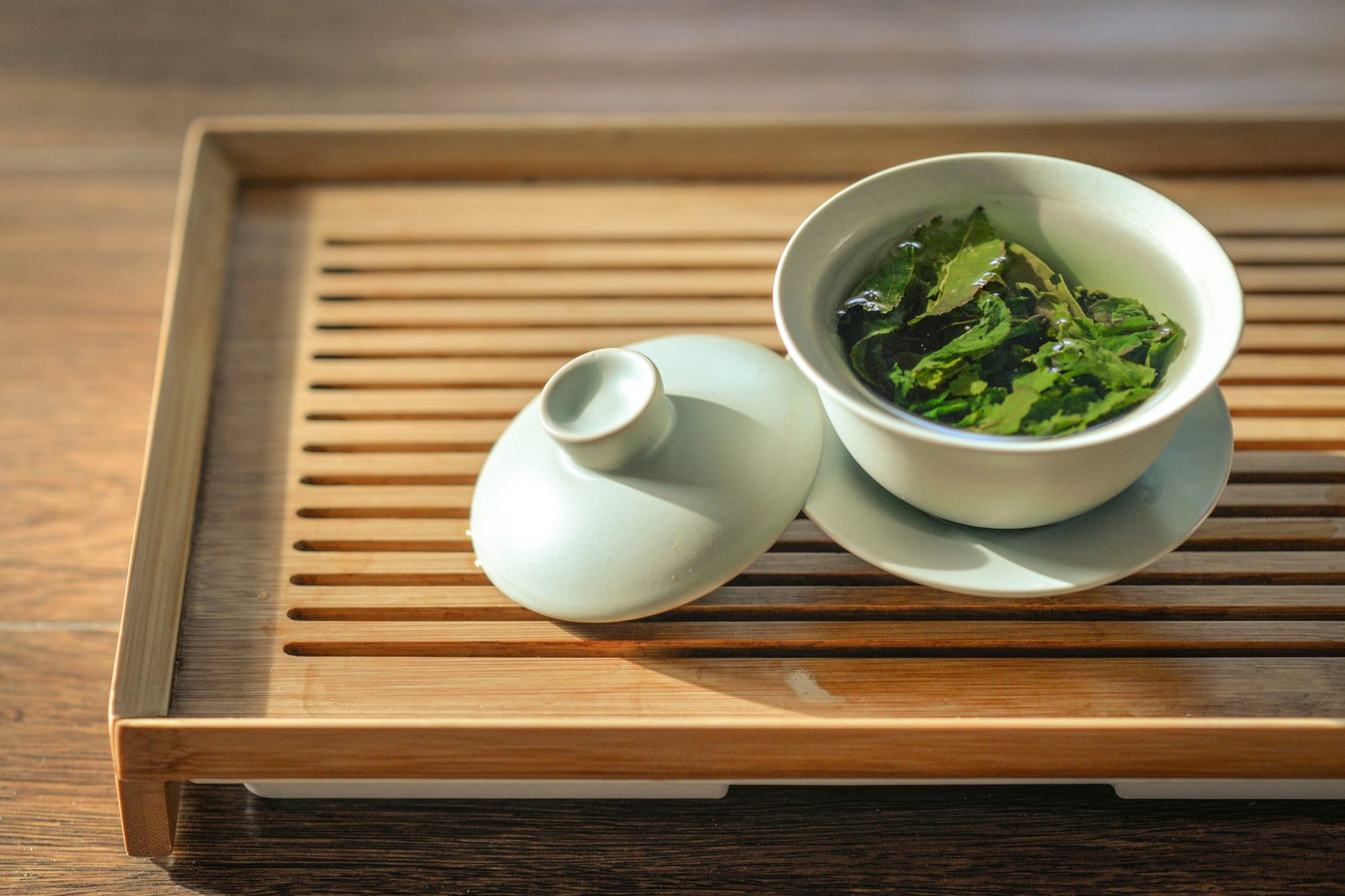
What’s Green Tea? Green or Fresh Tea?
Green tea, as the name suggests, has a main feature of green color. The green tea, the tea soup and the brewed tea leaves are all green. The major tea-making techniques of green tea are green killing, kneading and twisting, drying. Among the techniques, green killing is the most important technique. The purpose of green killing is to deprive the activity of enzymes in fresh tea leaves. Thus, the fermentation progress in fresh leaves is prevented and the green color of tea leaves is kept. Due to the lack of fermentation, more substances in fresh leaves (tea polyphenol, caffeine, chlorophyll, etc.) are kept. For the same reason, green tea is more stimulating compared with other fermented tea. The main types of green tea are Dragon Well, Green Snail Spring, Melon Seed, Anji White, etc.
Dragon Well
Dragon Well was an Imperial Tribute Tea to the Qing Dynasty. It was originally produced in the West Lake region of Zhejiang province. Dragon Well is shaped and dried by hand using a heated pan. Tea makers use their flat hands to move the bud sets around the pan to produce the signature Longjing shape with each tea bud flat, shiny and yellow-green. The brew has a distinct roasted bean and orchid-like flavor. The legend of Long Jing says that the emperor visited the Hu Gong Temple in West Lake one day and was presented with a bowl of the tea. He was so impressed by the delicious taste and aroma that he gave imperial status to the 18 tea bushes growing in front of the temple.
Green Snail Spring
Green Snail Spring was an Imperial Tribute Tea to the Tang Dynasty and is still on the list of the Chinese Famous Top 10 Teas. Originally it was produced in the Dongting Mountains near Lake Tai in Suzhou, Jiangsu Province. The ingredients of Green Snail Spring are buds with one leaf on one bud. Green Snail Spring is hand-picked and shaped. It is harvested in late March to Early April and it is the one of the earliest harvested green teas of the spring. Green Snail Spring is traditionally brewed by placing the leaves into water, as opposed to pouring water over the leaves. The leaves slowly float to the bottom like falling snowflakes.
Melon Seed
Melon Seed is a kind of green tea from Lu’an, Anhui Province. It is named for its tightly rolled seed-like processed leaves, which are flat and resemble a melon seed. Melon Seed does not contain any buds or stems. The tea trees of Melon Seed grow in the Dabie Mountains in Anhui Province. Melon Seed is harvested in mid-April, allowing the buds to open up. The first documented evidence of Melon Seed dates back to the Tang Dynasty. It was designated as a tribute tea during the Qing Dynasty.
Anji White
Anji White is produced in Anji County, Huzhou Prefecture, Zhejiang Province. Anji White has a history of nearly a thousand years. Although Anji White is called white tea, it is not a white tea, it is a green tea. The name is derived from the pale green color of the baiye yihao cultivar leaves used to produced Anji White. It is a specialty of Anji County and is a national geographical indication product of China.
Some text and pictures are from other sources. If there is any infringement, please contact us.





